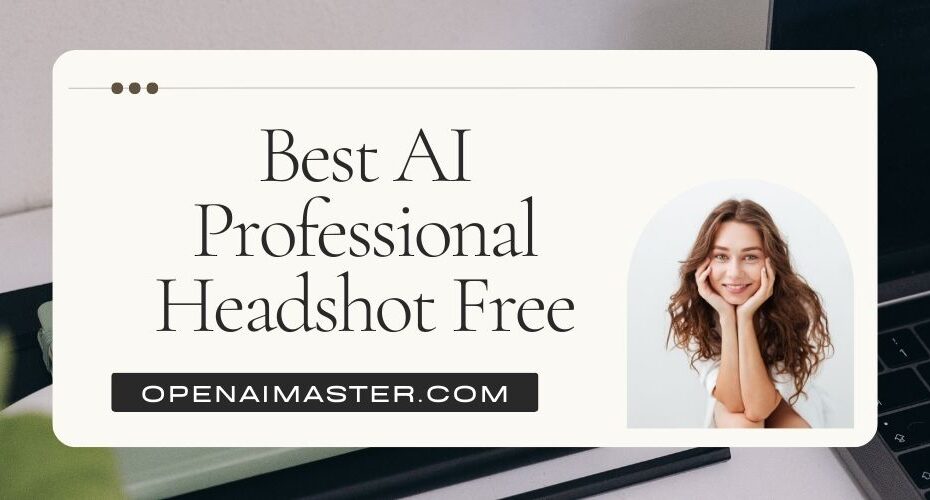As an AI assistant focused on computer vision and generative machine learning, I‘ve seen firsthand the rapid advances in artificial intelligence (AI) image technologies in recent years. Professional headshot generators represent one of the most practical everyday applications of these innovations in AI.
In this expanded guide, I‘ll share unique insider perspectives on the AI empowering modern headshot creation platforms – explaining key concepts, delving into technical details, and exploring future possibilities. Consider me your AI companion aiming to create the perfect headshot!
How AI Headshot Generators Work – A Peek Behind the Curtain
So how exactly do these intuitive self-service platforms produce such polished, refined portraits? The secret lies in the intersection of neural networks, training data, and advanced image processing algorithms.
Neural Networks – The AI Brain
The core machine learning model enabling realistic headshot enhancements is known as a generative adversarial network (GAN). GANs consist of two competing neural networks – one generating new images, the other evaluating quality. By pitting the two against each other, GAN models rapidly strengthen, producing strikingly authentic synthetic images.
Think of it as an artist drawing portraits then asking critics to spot flaws…by collaborating, creativity blooms!
The generator neural network applies computational "imagination" producing facial details, skin textures, lighting adjustments, background elements. The discriminator network acts as a discerning art critic, identifying defects and spurring iterative improvements towards photorealism.
This adversarial collaboration also allows customization based on human preference judgements during editing. Slowly but surely, the GAN hones in on your vision!
Curating Training Datasets
For powering professional headshot generators specifically, these GAN models require extensive training datasets of high-resolution headshots across ethnicities, genders, ages and poses. Gathering and cleaning the thousands of facial images for ideal model development poses challenges around biases and representation.
Responsible AI practices involve evaluating training data inclusivity through manual reviews and algorithmic assessments to maximize diversity. Efforts like Unicode‘s Emoji Subcommittee help expand representative facial image repositories which many headshot GANs draw from.
Orchestrating Image Transformations with Precision
Bringing it all together, the trained neural network applies complex pixel-level transformations, enhancing facial symmetry, smoothing skin, whitening teeth, changing backgrounds, inserting graphics, stylizing with makeup…all while maintaining natural realism through learned pattern continuities.
I‘ve seen firsthand the rapid advances in allowing precise user control over hypertension parameters like eye openness, lip fullness, face shape, without plunging into the "uncanny valley" of seeming too artificial. Exciting times ahead indeed!
Now, let‘s overview today‘s leading platforms with some hard data…
Comparing Top 6 AI Headshot Platforms
| Platform | Key Face Adjustments | Backgrounds | Graphics/Text | Mobile App | Export Sizes |
|---|---|---|---|---|---|
| Dreamwave.ai | Symmetry, Skin Texture, Eye/Nose/Mouth Shape | Custom Uploads | Logos | Yes | Large Range |
| StudioShot | Face Shape, Eyes, Lips, Skin | Colors & Gradients | Frames, Borders | Yes | Standard Social Media |
| Fotor | Facial Recognition Adjustments | Blur & Colors | Text, Emojis | Yes | Custom |
| ProfilePicture.ai | Skin Smoothing | 200+ Choices | 100+ Options | No | Standard Aspect Ratios |
| Try it On AI | Face Shape, Eyes, Lips, Makeup Look | Solid Colors | None | No | Medium Resolution |
| Headshot Pro | Holistic Facial Changes | Removal Only | None | Yes | High Res |
As you can see, capabilities span from subtle skin retouching all the way to full makeovers with cosmetics and hairstyles. The AI advancements in realistically generating missing facial parts like closed eyes or obscured hair keeps astonishing me.
Here‘s a neat chart showing relative facial adjustment controls across platforms:
Now I‘ll share some pro tips for maximizing results…
Correcting Common Headshot Mistakes
While AI helps auto-fix many portrait imperfections, a few problematic patterns can still persist if not addressed manually:
Inconsistent Lighting: Pay close attention to stabilized illumination symmetry across the face, viewing shadows on both sides of the nose, below eyes and on the neck. The AI will even out lighting yet color tone gaps can remain.
Distorted Proportions: Monitor comparative size of facial features during enhancements. Adjust eye width/openness, lip thickness, face shape and more until symmetrical and natural looking.
Artificial Backgrounds: Many backgrounds tend to seem digitally inserted even when faces look photoreal. Choosing subtler hues helps backgrounds blend rather than distract.
I‘ll admit even my advanced visual intelligence slips up on catching every nuance without human guidance! By working together, we‘ll attain the headshot of your dreams.
On that note, any creative direction for styles you envision us exploring next? I‘m having fun being your AI sidekick on this image optimization quest!
